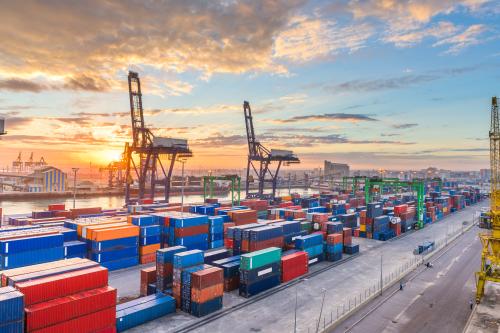Editor’s Note: In testimony to the U.S.-China Economic and Security Review Commission, Eswar Prasad discusses China’s continued progress on reducing its external imbalances, the main policy reforms that are needed, and the implications for the United States.
Since the financial crisis, China has made substantial progress on reducing its external imbalances, with the surpluses on both the current account and the trade balance falling sharply from their peaks in 2007. China has also made some progress on domestic rebalancing. Recent data suggest that it is time for a revision of the view that the country’s growth is driven largely by exports and investment. Private and government consumption together accounted for more than half of China’s output growth in 2011-12, signaling a significant change in the composition of domestic demand. Physical capital investment, the main driver of growth over the previous decade, is no longer the dominant contributor to growth while a shrinking trade balance in fact made a negative contribution to growth in these two years.
Despite all of this progress, there remain major challenges to putting in place the reforms needed to improve the quality and efficiency of growth, continue the shift away from capital-intensive production, generate more employment, and allow more of the benefits of growth to filter down to the average household.
The twelfth five-year plan that was approved by the National People’s Congress in March 2011 appeared to herald a turning point in China’s economic development. It represented, at least in rhetoric, a marked shift in emphasis from high growth to the quality, balance and sustainability of that growth. The longer-term objective of the plan was to reorient growth to make it more balanced and sustainable from different perspectives–economic, social and environmental.
While steady growth and low inflation have eased immediate policy concerns, China still faces a number of challenges related to the longer-term structural transformation of the economy.
There were promising signs of a push for reforms in the first half of 2012, as a number of modest but significant actions signaled continued progress towards economic reforms. This reform momentum stalled in the latter half of the year, however, partly due to some unexpected political turmoil in the lead-up to the political transition that got underway last fall. Nevertheless, the economy has continued to turn in a good performance despite a weak external environment. While steady growth and low inflation have eased immediate policy concerns, China still faces a number of challenges related to the longer-term structural transformation of the economy. The new leadership has indicated a desire to push forward with reforms, but there have been few indications of specific measures under consideration.
In this testimony, I will review progress on different aspects of China’s rebalancing, discuss the main policy reforms that are needed, and summarize the implications for the United States.
Read the full testimony » (PDF)



Commentary
TestimonyRebalancing and Reforms in China
February 7, 2013